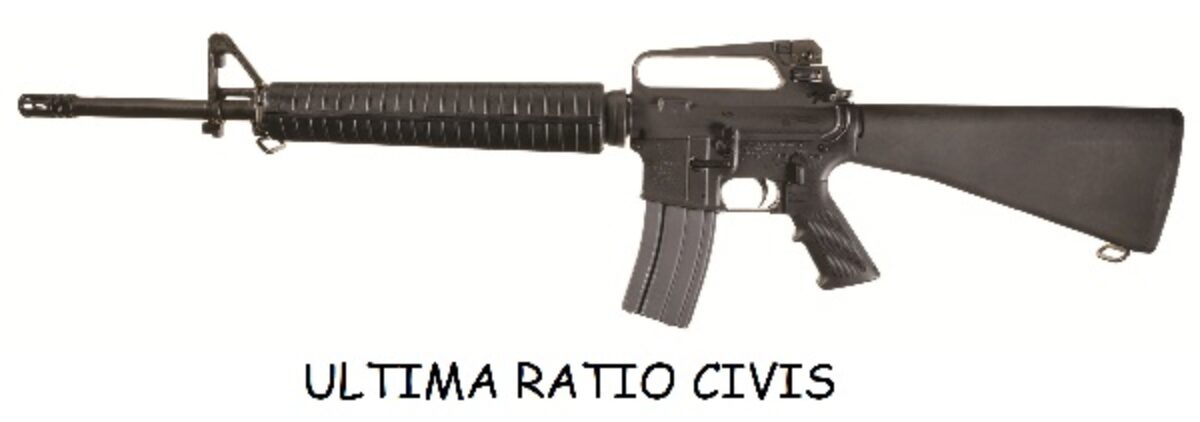Senate Bill 3: Gun licensing scheme much broader than claimed
The Colorado legislature is close to final passage of Senate Bill 25-003, to impose one of the most restrictive licensing systems in the nation on many, but not all firearms. Legislators and the public should understand that the bill would apply to all semiautomatic centerfire handguns. The kinds of handguns that Coloradans typically choose—from companies such as Glock, Ruger, or Smith & Wesson—would become much more onerous to purchase.
Senate Bill 3 seems cunningly written. It purports to apply only to the “gas-operated semiautomatic handgun.” (p. 4). The bill then provides five types of gas operation. Cumulatively, the definitions cover almost every centerfire semiautomatic handgun.
The bill does not apply to semiautomatics that fire the puny .22 rimfire cartridge.
There is only one centerfire semiautomatic handgun model that does not fall within the bill’s definitions. That unique item is the Benelli B-80, a collector’s item last manufactured in 1990. The identical gun was produced in six different calibers, model numbers 76 through 82.
As for every other model of semiautomatic pistol, Coloradans will be forced to navigate their way through one of the most onerous systems in the nation, far exceeding even California’s.
Clever bill language
The new system includes three additional fees on top of the ones already charged to firearms purchasers in Colorado, and none of those fees are capped. Unlike Colorado’s system for issuing handgun carry licenses, no government official has any obligation to make a decision on an application within a time frame.
Coloradans would still be able to buy revolvers rather than semiautomatics without running the new gauntlet. But revolvers constitute only about a sixth of all handguns sold these days, because American buyers prefer semiautomatics for their lower recoil, greater accuracy, and easier handling, among other reasons.
If Senate Bill 3 had been written straightforwardly, it would say “This bill applies to all semiautomatic centerfire handguns, except the Benelli B-80 models.”
Perhaps demonstrating the craft of expert drafting, the bill comes to the same result, but by using many more words.
The definition covers five types of operating mechanisms. Definitions (I) and (II) cover pistols in which expanding gas from the gunpowder explosion moves a “piston” to “cycle the action.” A firearm with a semiautomatic action ejects an empty cartridge case from the firing chamber and then moves a fresh cartridge into the firing chamber.
Definition (III) does not appear to apply to any handgun that currently exists, but would apply if someone designed a handgun using a mechanism from certain obscure rifles.
Definition (IV) covers any “hybrid.”
Definition (V) is any system that “directly utilizes” the gas pressure of the gunpowder explosion to cycle the gun, capturing all semiautomatic handguns: “a blowback-operated system that directly utilizes the expanding gasses of the ignited propellant powder acting on the cartridge case to drive the breechblock or breech bolt rearward.”
The definition describes how every semiautomatic handgun works, excepting the unique Benelli B-80. The cycling of a semiautomatic handgun physically cannot happen independent of “ignited propellant powder acting on the cartridge case to drive the breechblock or breech bolt rearward.”
In a semiautomatic, an empty cartridge case is left in the gun after the bullet has exited the muzzle. The empty case is ejected, and a fresh cartridge is loaded, in a mechanical operation that is powered by expanding gunpowder gases driving the empty cartridge case to push the breechblock or breech bolt rearward. (Except for the unique Benelli B-80.)
Definitions (I), (II), and (IV) cumulatively cover every semiautomatic by including every handgun that uses “a piston.”
According to Encyclopaedia Britannica, a piston is a “sliding cylinder with a closed head (the piston) that is moved reciprocally in a slightly larger cylindrical chamber (the cylinder) by or against pressure of a fluid” of liquid or gas.
Some semiautomatic handguns, but not the majority, have a built-in part that is called the “piston.” Every semiautomatic handgun, except the Benelli B-80, uses a piston to cycle the gun. (That is, to eject the empty cartridge case and load a fresh cartridge.)
In a semiautomatic handgun, the empty cartridge case itself functions as a piston. The case is a cylinder that moves inside another cylinder (the firing chamber). The closed base of the empty cartridge is pushed against the gun’s breechblock or breech bolt by the expanding gunpowder gas.
In short, all semiautomatics (except one) use a gas-powered piston. In some guns the piston is built in, and in others the piston is supplied by the ammunition. Notably, Senate Bill 3 does not limit its coverage only to guns with built-in pistons.
‘Gas’ versus ‘recoil’
People often informally call guns with built-in pistons “gas” guns and call guns with only cartridge case pistons “recoil” guns.
But scientifically speaking, no semiauto handgun (excepting the Benelli) operates via pure recoil rather than gas. Thus, Senate Bill 3’s exemption for handguns that use “recoil to cycle the action” covers only a single model type.
The Benelli B-80 handgun is deservedly a collector’s item today because of its unique inertia-based recoil system, which used no gas assistance. Benelli’s inertia recoil system was developed for the company’s well-respected shotguns.
Scientifically, recoil is the equal and opposite momentum imparted on a firearm by a bullet being fired. The forward pressure that drives the bullet out the muzzle is matched by an equal amount of backward pressure that is felt by the shooter as recoil. To demonstrate that so-called “recoil” guns (the ones without built-in pistons) are not actually operated by recoil, you can put a Glock or other common handgun in a vise so that it cannot recoil. The gun will function perfectly fine when fired, even if it does not move at all. Why? Because, in reality, the gun is operated by the gas-driven pressure imparted against the operating assembly by the empty cartridge case.
In contrast, if you locked a Benelli in a vise, the gun could not function, because the gun’s function is powered by solely by recoil, not by gas.
In sum, Senate Bill 3 uses two different techniques to cover virtually every semiautomatic handgun: First, the “piston” in (I), (II), and (IV). Second, definition (V) encompassing anything that “directly utilizes” gas pressure on an empty cartridge to cycle the gun.
At the treasurer’s pleasure
While the Senate Bill 3 text is very plain, scientifically speaking, some supporters of the bill may have thought that the bill only covered semiautomatic handguns with built-in pistons (a minority) rather than essentially all semiautomatic handguns.
According to Senate Bill 3 (p. 23), the state treasurer, via a division in his or her office, shall publish a “guidance” list of guns covered by the new restrictive licensing system. The division “may consult with firearm experts and convene working groups.”
In other words, Senate Bill 3 gives the state treasurer the power to impose the new system on every centerfire semiautomatic handgun, except the Benelli B-80.
If the state treasurer were to follow the bill as written, the expensive approach would be to compile a complete list of every semiautomatic centerfire handgun ever manufactured. The simpler approach would be for the list to simply read: “Everything except the Benelli B-80, as well as other models of that same gun in different calibers.”
For practical political purposes, present and future treasurers may take a more cautious approach, and not crack down on everything all at once, even though the bill so allows. Rather, treasurers may use their newly granted gun control powers to expand the list in steps, based on the political expediency of the moment.

